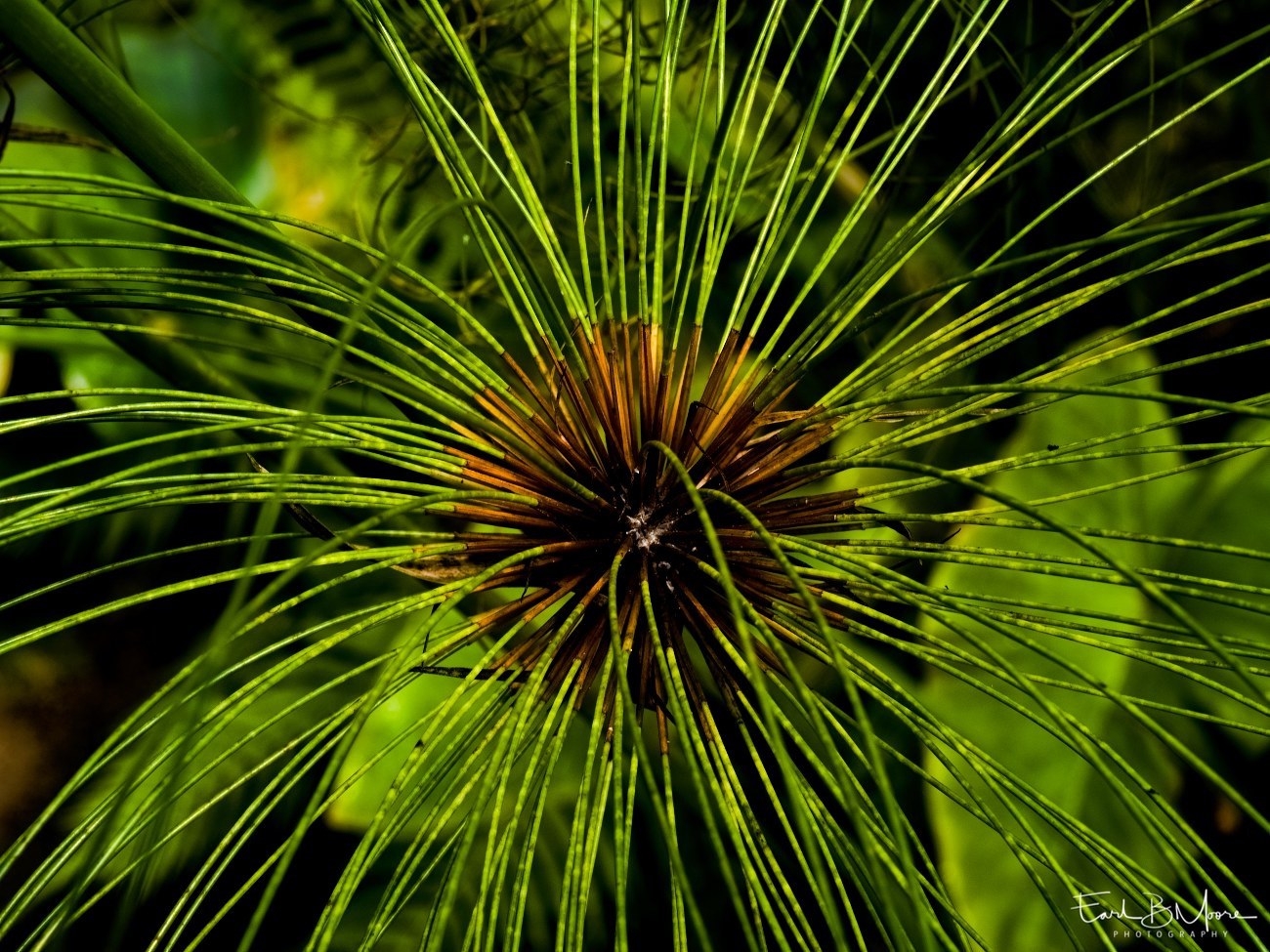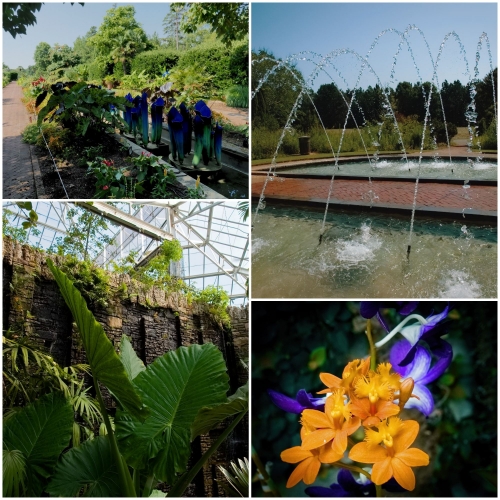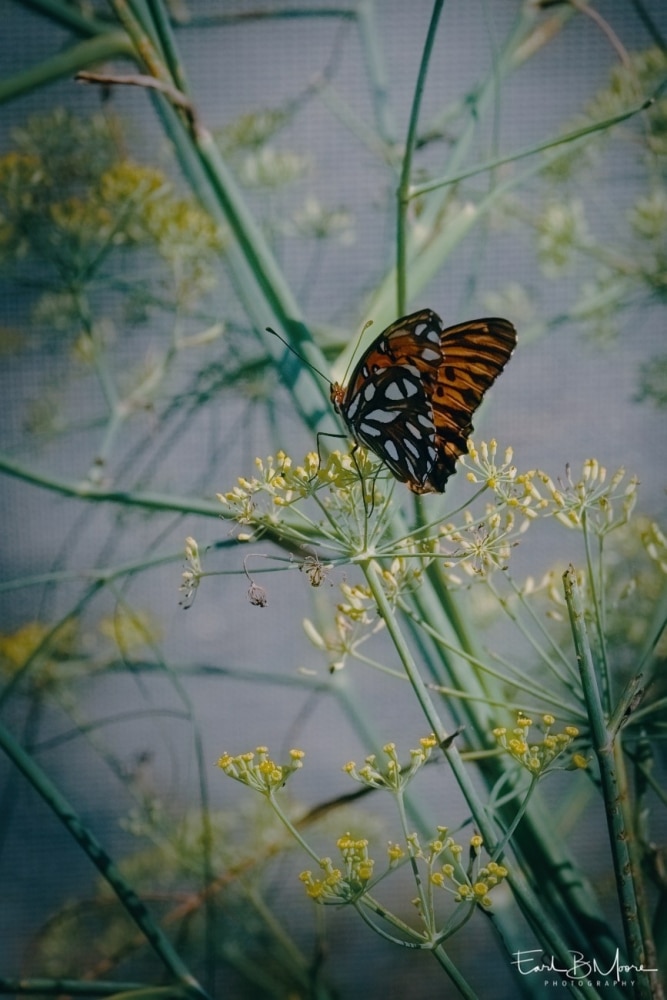“For the want of a nail the shoe was lost,
For the want of a shoe the horse was lost,
For the want of a horse the rider was lost,
For the want of a rider the battle was lost,
For the want of a battle the kingdom was lost,
And all for the want of a horseshoe nail.”
―

I’ve yet to meet the person who doesn’t enjoy watching colorful butterflies flitter through the air from plant to plant. As you might imagine these beautiful insets are struggling to adapt to the current climate changes in addition to man’s destruction of many of its natural environments. The Monarch Butterfly is perhaps one of the best known and studied butterflies. They are famous for their epic 3,000-mile migration from their summer homes in the northern U.S. and Canada to winter habitats in California and Mexico. But this migration could soon become a thing of the past. A 2018 western monarch count found that the number of west-coast monarchs spending the winter in California had dropped 86 percent since last 2017. And the number of eastern monarchs overwintering in Mexico for 2018-2019 has dropped 15 percent since last year. This indicates a total decline of more than 80 percent over the past 20 years, according to the National Wildlife Federation.
As part of the problem, the rising temperatures and increased drought of climate change have had a significant impact on the monarch’s primary food source, milkweed. This plant provides the monarch both a place for egg-laying and a food source for larval stage caterpillars as well as adult butterflies. Also, farmers continue to use herbicides to fight milkweed’s spread.
When I think of butterflies I remember a theory first espoused by Edward Lorenz in 1972, commonly known as the butterfly effect. This theory of small cause with huge effects over time spawned several somewhat questionable science-fiction time-travel movies to include: “The Butterfly Effect” (2004); and “A Sound of Thunder” (2005). So if you follow this theory, there is indeed reason to be concerned at the loss of butterflies, or any other species, which on the surface and short term may seem to have a small effect but in the long term may be disastrous.
It’s easy to feel helpless about what any single one us can do to help butterflies, or for that matter, any other major environmental cause of worth. But, significant achievements are most often comprised of a multitude of small deeds.
For the monarch butterfly, If you have any native milkweed plants in your area preserve them for monarchs to lay eggs on and for monarch caterpillars to eat. If there are no milkweeds, consider setting out a few plants as well as also providing some native nectar-rich plants and flowers for monarch butterflies to feed on. Overall it comes down to each of us understanding some of the root causes of why our climate is getting warmer, the effects it’s having on the earth and all its creatures…yes even us. Also we, and I mean myself as well, must start being proactive in our choices and actively support decisive action for environmental issues.
The subject of butterflies came to mind due to a recent visit by Bonnie and me to the Daniel Stowe Botanical Gardens (DSBG) located on 380 acres of rolling meadows, woodlands, and lakefront property in Belmont, North Carolina. We’ve been to these gardens previously, actually, my step-daughter was married there, but we’d never taken the time to walk and enjoy the grounds properly.

While there, we visited their “Butterfly Bungalow” and enjoyed the chance to observe adult butterflies emerging from their chrysalis. It’s an interesting process to see. When they first emerge, both of their wings are soft and folded tightly against their body. This is because the butterfly had to fit all its parts inside of the pupa. They emerge from the chrysalis head down but quickly turn themselves 180° to be head up and will begin pumping blood and fluid into their wings to get them extended. They then must “hang” and wait until their wings dry. Usually, within a three or four-hour period, the wings will dry, and the butterfly will master flying, search for nutrients and begin the search for a mate to reproduce. Let me just note here that while small children will find this butterfly process fascinating, they should be well supervised at all times…enough said. ;-)

We also visited the DSBG Orchid Conservatory, the only 8,000-square-foot, five-story glasshouse dedicated to the display of orchids and tropical plants in the Carolinas, and explored the various garden trails enjoying the many plants, flowers, water features, and benches. It was a little warm, so we didn’t partake of the three-plus miles of walking trails on the 300+ acre grounds, some of which meander along the shores of nearby Lake Wylie…perhaps for another visit when it’s cooler.

It was an interesting and relaxing visit. We took a few moments along the way to sit in the shade, listen to the water feature, and soak in the natural beauty.

I’d not made any photos using my Olympus OM-D camera in months, perhaps even as long as a year, so I found myself having to relearn/re-remember the menus and customized control button settings on the camera. However, I soon felt comfortable again and even tried some of the new settings that came with a recent firmware update. :-)

Looks like a beautiful place worthy of some repeat visits! You know, to practice with the updated camera options. :-)
Our yard is full of plants for pollinators, but feels like an oasis in a neighborhood of the lawn obsessed, chemical spraying people that like living on the edge of the woods, but not all the nature that comes with it. Fortunately our county is taking steps to plant more habitat, and there is a community college apiary I discovered last year that was just full of monarchs.
Well, I could always improve from more practice with a camera, no matter its options. :-)
The manicured yard neatly edged and mowed with boundaries controlled, often with chemicals, has long been synonymous with success and “virtue.” Just look at most golf courses. Haha, perhaps it ties back somehow to a puritan ancestry. But, there’s certainly room for a compromise. I’ve seen some beautiful designs for rural areas with significant natural areas and native plants. It seems to be approaching the point where we either evolve or we die out. It’s good to hear some are moving in the right direction. Thanks
Nice looking gardens Earl. I’m surprised you’ve never met someone with lepidopterophobia as it’s considered a fairly common phobia. Like you though, I do enjoy watching butterflies. They are amazing creatures on so many levels.
Cedric, I honestly can’t remember anyone who was afraid of butterflies…lepidopterophobia. Haha, either I chose to forget them or I must not hang with that crowd. :-)
My curiosity was peaked inspiring a little research on my part and interestingly it seems a moderate percentage of those with lepidopterophobia also have fears of winged insects in general and in some cases fear of any flying creature, including birds. Interesting…I stand better educated. So if my statement was too general…apologies. :-)
I agree butterflies are amazing, but than there’s a lot of amazing in this world isn’t there. Here’s an interesting tidbit I recently read about the monarchs. Some studies seem to indicate with recent climate changes their wings are getting larger. Scientists don’t know the reason but some speculate it may be due to requirements for longer migrations for food or perhaps to provide additional lift in hotter temperatures, or both.
Each year the San Diego Wild Animal Park opens their butterfly exhibit to the public. It’s a large screened in aviary full of all imaginable butterflies. I could spend a good part of the day there but they have such a line to get in you kinda feel guilty for taking up space for too long. On the way out you go thru a small enclosed foyer so the attendant can brush off any escapees. This post reminds me to head back there come spring. The monarch photo is certainly a keeper and should be printed and hung!
Hi Joe, the butterfly exhibit we visited was also in an aviary type structure and there was also a foyer you moved through as you came out. I guess there’s a standard set-up. Thankfully there were multiple signs warning people to look down as they visited because often the butterflies would land on the ground and it would be easy to accidentally step on one. Thanks on the photo! Take care!
There is a Butterfly Pavillion in the Denver area but it’s been years since I was there. It would be a good day trip. Now you have me thinking.
I thought about planting some wildflowers along the edges of the ponds so I can have more color and provide an area for butterflies and bees. You have just stirred that within me. I hope we can do something to help with our climate crisis.
Both the visit to the Butterfly Pavilion and the setting out of wildflowers sound like worthwhile and rewarding projects, Monte. As for the climate crisis, I think there’s no chance of stopping it at this point especially now with a government and officials here which won’t even recognize and understand the science behind it. One of the most important upcoming efforts we as individuals can do to help with the climate crisis will be in voting in the upcoming 2020 elections. We need brighter and less morally bankrupted representatives in public office to begin the enormous tasks of preserving and reversing as much as possible and lessening on as wide a scale as possible the climate impacts. I do try to stay away from being political on here but in all honesty, it can no longer be separated from the mess we find ourselves in. Thanks for stopping by Monte. Always appreciated!